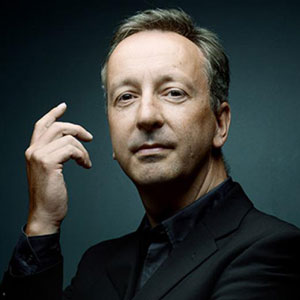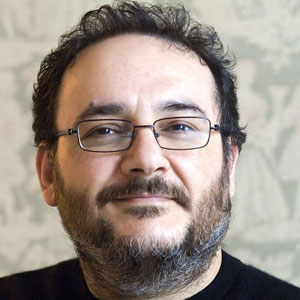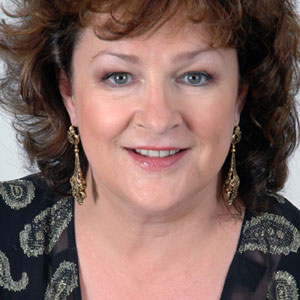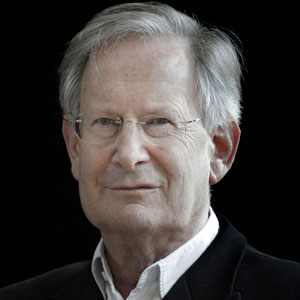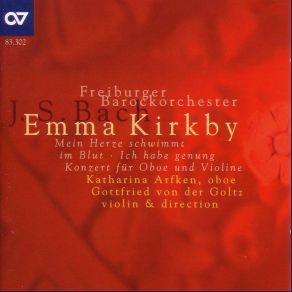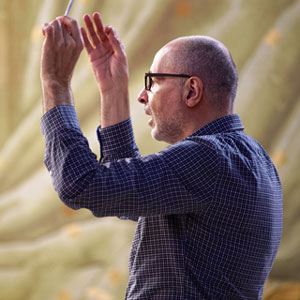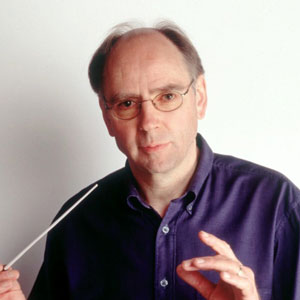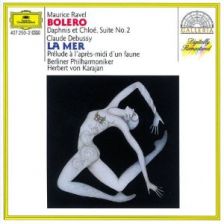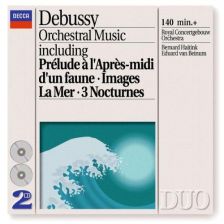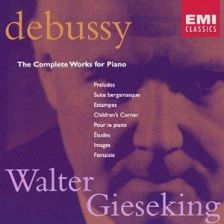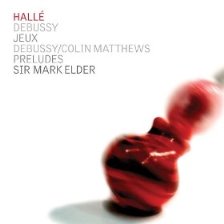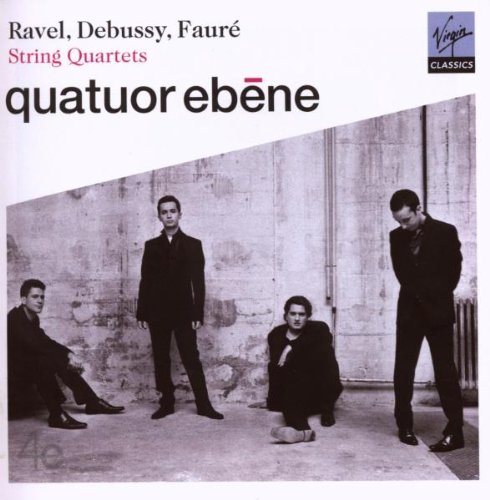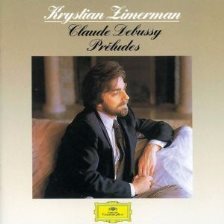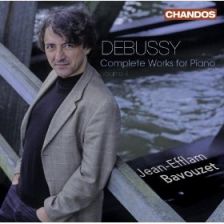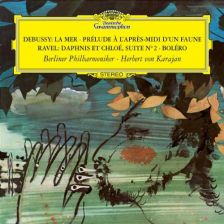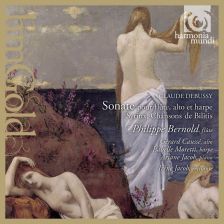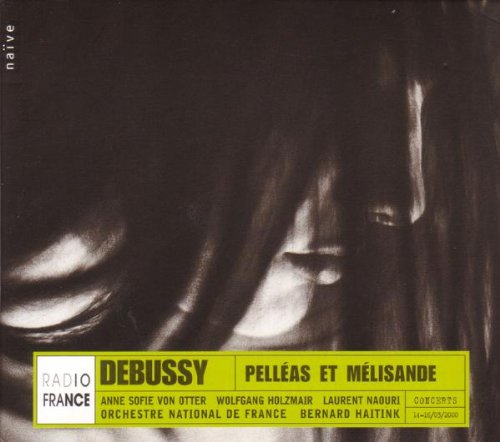Del Blog https://ipromesisposi.blogspot.com/search?q=monteverdi
MIÉRCOLES, 16 DE AGOSTO DE 2017
Monteverdi: Vespro della Beata Vergine (1610 Vespers)
Monteverdi's Vespers – which recording is best?
Lindsay Kemp
Monday, February 9, 2015
A pillar of Baroque sacred repertoire, Monteverdi’s Vespers is open to countless interpretations on record, as Lindsay Kemp discovers
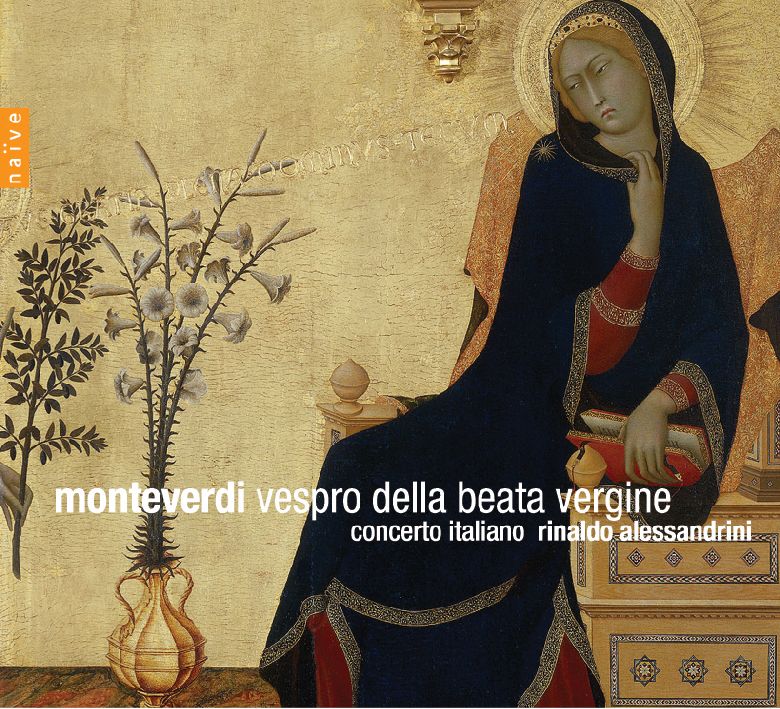
Monteverdi’s Vespers is an iconic work in more ways than one. For the composer, who published it 400 years ago in 1610, it was a calculated summation of his skill as a writer of sacred music at a time when he most needed to advertise it. Aged 43, and largely known as a madrigalist, he wanted to escape the frustrations of working at the court of the Gonzaga dukes in Mantua and find a new job, ideally at the Papal chapel. In the event, the publication almost certainly helped him gain a prestigious alternative, the post of maestro di cappella at St Mark’s in Venice, which he would keep until his death in 1643.
For us today, however, the work has become one of the great pillars of the Baroque vocal-and-orchestral repertoire, a staple of the living canon that, like Handel’s Messiah or Bach’s B minor Mass, is almost guaranteed to sell out in concert. And this is in spite of the fact that its performance history is relatively short; the first full public performances were in the 1930s and the first recordings in the 1950s, making the Vespers an essentially modern presence. Indeed, its growing familiarity and reputation can be seen as iconic of something that Monteverdi himself would have had difficulty comprehending. For the story of the rise of the Monteverdi Vespers is the story of the post-war early music movement.
Nothing could be more obvious after listening to the nearly 30 performances to have made it onto CD, the earliest from 1966 and the latest from 2007. For indeed much of early music life is here. Many are the threads one could follow in a chronological trawl through five decades of Vespers recordings, including the dramatic improvement in the standard of playing on period instruments, the rediscovery of singing styles and techniques appropriate to the music (including the growth in one-to-a-part vocal ensembles), the fluctuating pull between musicological and artistic concerns (with the occasional entertaining spat between the individuals involved), and the role that recording itself has played in raising the public’s appreciation of early music. Then there is the sense of community: a singer might appear several times (tenors Nigel Rogers, Ian Partridge and John Elwes for instance, or sopranos Maria Cristina Kiehr and Tessa Bonner); the cornett lists are dominated by the names of Jean-Pierre Canihac, Jeremy West, Bruce Dickey and Doron David Sherwin; several husbands conduct their wives; and musicians who have directed their own performances can be found playing in orchestras for others. It all seems to point to one thing: that, in a sense, the Vespers of 1610 is modern-day early music.
The sum of many parts
Perhaps the most remarkable aspect of the Vespers’ success is that in all likelihood it is not really “a work” at all, and that Monteverdi may well have never heard it performed as one. The 1610 publication was entitled Missa…ac Vespera…cum nonnullis sacris concentibus [Mass and Vespers, with some Sacred Concertos], and while some movements are standard components of Vespers – the Responsorium (“Domine ad adiuvandum”), the five chant-based, polyphonic psalm-settings (“Dixit Dominus”, “Laudate pueri”, “Laetatus sum”, “Nisi Dominus” and “Lauda Jerusalem”), the hymn (“Ave maris stella”) and the Magnificat (of which Monteverdi offered two settings, one in six parts, and the other a seven-part elaboration of it with instruments) – the same cannot be said of the Mass, the sacred concertos “Nigra sum”, “Pulchra es”, “Duo seraphim” and “Audi coelum” (in effect up-to-date early Baroque motets for solo voices and continuo), or the principally instrumental Sonata sopra Sancta Maria. In short, a liturgically correct service cannot be made from the Vespers as it stands, so that it begins to look not so much like a self-contained work as a resource book showcasing pieces in various new and older styles that Monteverdi had composed during his time in Mantua – albeit arranged against the background shape of
a Vespers sequence.
Some scholars have argued that, like the obviously separate Mass, the concertos were added to the publication as a kind of bonus and never intended to form part of the Vespers (Denis Stevens even recorded the work without them in 1966, which is perhaps going a little too far to make a point). A generally accepted view, however, is that, since most set Marian texts, they were intended as permissible substitutes for some of the service’s plainchant antiphons. This conveniently allows them to be included even in those performances that attempt to create a liturgical context by interpolating appropriate chant, even if in those cases considerable reordering and rejigging of items is often necessary. Other performances ignore these problems altogether, however, and simply present the Vespers as it appeared in print.
In the end, though, such matters can be considered secondary for, whether by accident or design, Monteverdi’s ordering of pieces comprises a concert work of about 80 to 90 minutes in length that is perfectly convincing to modern ears. The alternation of solo and choral numbers has the same logic as a Bach or Handel oratorio, and while the long and contemplative Magnificat that ends the work may seem unconventionally ethereal, its two-minute final chorus makes for a stirring conclusion. And nothing can obscure the brilliance, beauty and power of Monteverdi’s music, so full of unforgettable moments – from the neck-tingling splendour of the opening Responsorium to the sensual intimacy of the duetting sopranos in “Pulchra es”, the dizzying virtuosity and exoticism of three tenors in “Duo seraphim” to the wind-down ending of “Laudate pueri”, and the commanding, Orfeo-like tenor roulades of “Audi coelum” to the masterly instrumental composition that is the Sonata sopra Sancta Maria, over which Monteverdi ingeniously lays a chanted soprano prayer, “Sancta Maria, ora pro nobis”.
The recordings
The earliest Vespers currently on CD, dating from 1966, is the first of two by Michel Corboz and his Lausanne forces. The choir is big and warm, the strings are modern and tempi are for the most part reverential and smooth. Yet there is a tenderness here, even a cloistery stillness, that is not to be found in any other version, not even in Corboz’s brighter and more sharply etched second account from 1982.
It is hard to believe that Jürgen Jürgens’s 1967 recording is from the same era. This is the first to use all period instruments (the Vienna Concentus Musicus), the first to add “liturgical” chant and, led by the peerless Nigel Rogers, the first to feature convincingly stylish solo singing. Though the Hamburg Monteverdi Choir is stodgy in places, this is a wise and atmospheric performance, with much of the colour and focus we would expect to hear today.
The first of John Eliot Gardiner’s two recordings, from 1974 (10 years after he conducted the piece in the Monteverdi Choir’s inaugural concert), sounds in many ways more old-fashioned. Modern strings and brass, and the likes of Jill Gomez, Robert Tear, Philip Langridge and John Shirley-Quirk among the soloists, give it a beefy ebullience that is matched by the forceful virtuosity of the choir. But though Gardiner’s purposeful approach is stirringly dramatic, boldly eventful and full of ideas, it is also rhythmically rather rigid, and some of the greater subtleties of other performances are absent.
Hanns-Martin Schneidt’s 1975 recording with the Regensburg Cathedral Choir is the first to use boys’ voices. They bring a brightness to the performance that sits well with the increased technical confidence of the period-instrument playing, and there is some excellent solo singing, including a beautiful, other-worldly countertenor version of “Pulchra es” from Paul Esswood and Kevin Smith. A later account by Heinz Hennig with the Hanover Boys’ Choir (1979) is similar in style but lacks the same polish, leaving Schneidt’s with justifiable claims to be the state-of-the-art Vespers for the 1970s, as Jürgens’s was for the ’60s.
If Jürgens and Schneidt have a 1980s counterpart, it would almost certainly have to be Andrew Parrott’s 1984 recording with the Taverner Consort, which devises a complex liturgical plan involving extra instrumental pieces and the displacement of existing numbers, and, without quite going the whole one-to-a-part hog, makes a decisive move away from large choral sound. The result may have lacked splendour to the ears of those used to what had gone before but with some of Britain’s finest consort singers and instrumentalists involved, and model solo contributions from Emma Kirkby and Nigel Rogers, there is a vocal clarity and beauty here that gives the work a new humanity and intimacy.
Parrott’s is also the first recording to take note of the musicological discovery that the Magnificat should be sung a fourth lower than its notated pitch. Though this is now almost common practice, many directors were at first reluctant to follow suit, having grown accustomed to enjoying the ethereal change of plane the higher pitch brought to the work’s final 15 minutes. One other early adopter of transpositions, however, was Philippe Herreweghe but though his 1986 performance is typically gentlemanly and sweetly balanced, the soloists are pallid and it has, indeed, a “low-key” feel. Very different, though hardly preferable, is Nikolaus Harnoncourt’s live recording with Vienna Concentus Musicus from the same year, marred by choral singing that is unattractively full-voiced and thumpingly text-led. A flurry of late-1980s recordings was initiated in 1988 by Harry Christophers and The Sixteen in a radical reordering that proposed a new liturgical context for the Vespers as music originally written to honour the Gonzagas’ patron saint, Saint Barbara. Aside from the mild amusement to be had from hearing the “Sancta Marias” of the Sonata transformed into “Sancta Bar-ba-ra”, this is a bright and clean choral performance, freely expressive and forthright in style without being aggressive, and perhaps the most successfully realised meeting between the work and the sound of the modern British professional chorus.
Later that year and the Gonzaga lady was in the frame again, as Jordi Savall and La Capella Reial turned up to record in Mantua’s Santa Barbara Basilica itself. Typically, Savall and his vocal consort and instrumentalists achieve more achingly and lingeringly beautiful moments than anyone else, but at a cost to overall cohesiveness and momentum, especially in an overly drawn-out Magnificat. Worse, his Italian choir is frustratingly weedy.
Three recordings from 1989 effectively summed up the different approaches by now running in parallel. Gardiner’s second, spectacularly recorded live in St Mark’s, has a punchy choral sound, near-operatic solo singing (Bryn Terfel and Alistair Miles are among the basses), emphatic enunciation, big contrasts and deliberate exploitation of the building’s spaces. Its outright theatricality sets it apart from other performances, but may make it a distinctly guilty pleasure for some. Frieder Bernius’s intelligent and agile Stuttgart performance, very much of its time, takes the part-consort, part-choral path. Philip Pickett and the New London Consort, however, are the first to perform the piece one-to-a-part throughout (and with chant and transpositions to boot); their consort sound is less warmly homogeneous than some others but with Catherine Bott and John Mark Ainsley aboard there are compensating moments of individual flexibility and expressiveness.
Both the next two recordings also adopt the strict one-to-a-part approach, though neither is as satisfying an account as Pickett’s. The Scholars, in 1993, are well-intentioned but simply weaker vocally and technically, while in 1994 Konrad Junghänel and Cantus Cölln, despite being technically accomplished and precise in every way (this is the first of several distinguished Vespers appearances by the cornetts and sackbuts of Concerto Palatino), deaden their performance with an unvarying, somewhat instrumental style of singing.
Oddly enough, single-voice performances drop out for the next few years. René Jacobs’s 1995 recording is a sudden return to full-blooded choral singing, supplied by the Netherlands Chamber Choir, robustly buoyed by instrumental doubling. The choir is not the most refined or transparent but Jacobs draws a vibrant and flamboyant performance from them, in which lyrical expression is never forgotten. Interestingly, the vocal lines are largely unadorned but the cornett embellishments are almost balmily florid. There is also a lovely and unhurried “Pulchra es” from Maria Cristina Kiehr and Barbara Borden.
The only all-American Vespers in this survey comes from Martin Pearlman and Boston Baroque in 1997 but unremarkable soloists, untidy ensemble and a rather hollow recorded sound remove it from the serious contenders list. Rather better from that year is the performance by William Christie and Les Arts Florissants, a warmly choral version yet one that achieves almost all its effects through skilled pacing and attention to expressive detail rather than strident volume, with results as fluid and telling as in some huge madrigal. Here, too, are some of the most purely beautiful moments since Savall, not least Paul Agnew’s passionate but poised “Nigra sum” and “Audi coelum”.
The year of 1998 saw a landmark of sorts in the first recording by Italian speakers, even if the Swiss Radio Choir’s concert performance under Diego Fasolis give a rather dull reading hampered by a few too many of the problems associated with a live taping. A similar absence of spark characterises Masaaki Suzuki’s account with the Bach Collegium Japan from 1999; the choir sing with predictable clarity and grace but the soloists are colourless, and in the end there is little sense of atmosphere. In between these two, however, comes a liturgical (and much added-to and reordered) version from Gabriel Garrido and Ensemble Elyma which, while perhaps lacking technical slickness, is nevertheless astutely shaped and firmly directed. It also contains the most freely and naturally expressive “Pulchra es” from Emanuela Galli and Adriana Fernández.
A fascinating alternative view of the work is offered by Peter Seymour’s 2004 recording with the Yorkshire Bach Choir, which takes all Monteverdi’s most austere performance options to leave us without cornetts, sackbuts, strings and, for that matter, the Responsorium and the Sonata. Seymour also opts for the simpler six-part Magnificat but his intelligently pointed choral direction and a fresh-sounding choir ensure that the music retains its interest.
In the meantime, one-to-a-part performances had returned in 2002 with Tragicomedia under Stephen Stubbs but a dry and unforgiving acoustic, as well as the feeling that this is a Vespers more for instrumentalists than singers, make this a hard one to love. A much more exciting account is that of Rinaldo Alessandrini and Concerto Italiano, a fully Italian version at last (in 2004!), and one of the most imaginative for many a year. Like Christie, Alessandrini reveals his experience in madrigals, and though his alertly expressive tempo shifts may offer more jolts than the American’s, they are no less convincing. The consort singing is bold and focused, yet sensitive, but it is a solo that provides eight of the most striking minutes in all of these recordings: a thrillingly full-blooded “Audi coelum” from baritone Pietro Spagnoli that sends shivers down the spine.
Unsurprisingly, Paul McCreesh opts for the liturgical approach in his 2005 recording with the Gabrieli Consort, in which his one-to-a-part reading gains a particular colouring from the use of male falsettists. In fact, though, the consort singing is a touch unincisive and vibrato-affected, and McCreesh’s main achievement lies in some convincing tempo choices (including a slow, processional “Ave maris stella”) and in maintaining the Magnificat’s sense of mystery more than most at lower pitch. After all this, Robert King’s 2006 recording with The King’s Consort is like a blast from a less-complicated past. More than any other version, this one sounds like its director has set out to enjoy himself and forget the musicological baggage. Gleefully choral and revelling in presenting the Vespers as a work of splendour, it benefits from some strong solo singing (notably from Charles Daniels and James Gilchrist).
The last two Vespers recordings both date from 2007. Ralph Allwood’s lively-minded direction shows the youthful agility of the Rodolfus Choir, and sounds attractive in Eton College Chapel’s acoustics, but technical control occasionally falters. Surprisingly this one retains the higher pitch for the Magnificat, and it is interesting how toy-like it now sounds. Most recent is a recording from veteran Sigiswald Kuijken and La Petite Bande – rather an instrumentalist’s version but accomplished nevertheless, in which stately psalms contrast with the flow of the motets and succession of verses in “Ave maris stella”. Not everyone will like the fruity and tootily intrusive organ accompaniments though.
The variety of approaches taken to the Monteverdi Vespers make it difficult to single out a first choice. Some listeners will want added chant, others a one-to-a-part performance; others still may hanker for the high-pitched Magnificat. But had I to pick one above all others, I would want it to be one I could live with but also one that could continue to make me marvel at the music’s many great touches of genius and grace. Christie’s deeply generous and skilled reading does that for me but I will never stop wanting to go back to Andrew Parrott’s recording – a landmark achievement that, for all its scholarliness, still has the power to touch heart, ear and mind.
Outgoing splendour
Concerto Vocale / René Jacobs
John Eliot Gardiner’s explosive second recording takes some beating, and Robert King is eager and spontaneous though less imaginative, but it is René Jacobs’s outgoing and richly doubled performance that perhaps does most both to excite and please the ear. Gramophone review
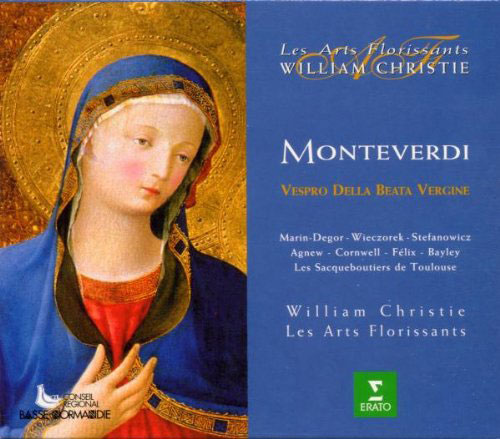
Exquisite beauty
Les Arts Florissants / William Christie
Jordi Savall’s recording has moments of exquisiteness, but for all-round loveliness, William Christie gives a masterclass in how to handle Baroque choral, solo vocal and instrumental textures to moving effect. Gramophone review
One-to-a-part
Concerto Italiano / Rinaldo Alessandrini
The first fully solo-voice recording was Philip Pickett’s and it is still a revealing and highly recommendable version. Fifteen years later, though, Rinaldo Alessandrini produced one of the most adventurous Vespers to date, one full of ideas that all lovers of the piece should hear. Gramophone review
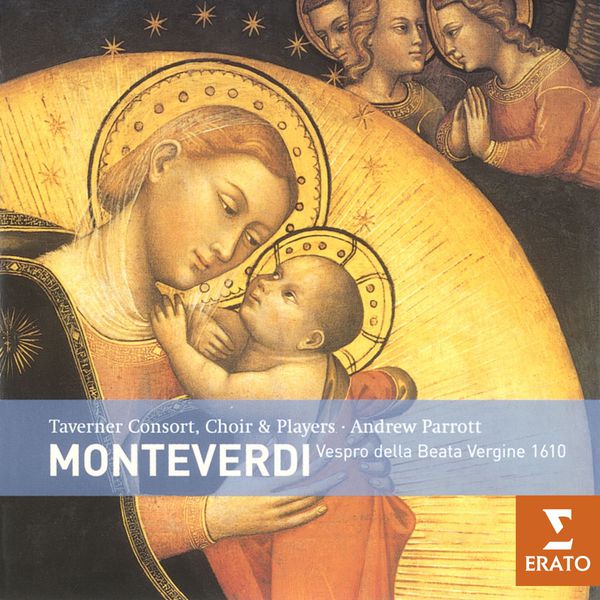
The top choice
Taverner Consort / Andrew Parrott
Andrew Parrott’s chant-strewn reconstruction may seem to elevate musicological concerns over artistic ones but this is an intensely musical consort version in which fine instrumental playing and solo singing help to add lyric intimacy to a strong sense of atmosphere. Gramophone review
This article originally appeared in the June 2010 issue of Gramophone.
In 2011 a very fine recording of Monteverdi's Vespers was recorded by L'Arpeggiata and Christine Pluhar. In his review of that recording Lindsay Kemp said, 'Last year I listened to over 30 Vespers for The Gramophone Collection, and this one joins those by Philip Pickett and Rinaldo Alessandrini at the top of the class of colourful versions using solo voices. Few in any category have been more exciting, however, or made my blood course more keenly.' You can read the full Gramophone review of that recording here.
















